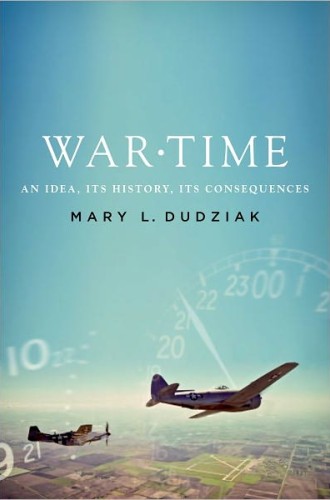War Time, by Mary L. Dudziak
One of the notable features of the Obama administration’s foreign policy has been its disavowal of the locution, if not necessarily the policies, of the “war on terror” declared by George W. Bush in the wake of the terrorist attacks of September 11, 2001. Apparently wary of committing himself rhetorically to a war with no conceivable conclusion, Obama has sustained many of the liberty-averse, antiterrorist practices of the Bush administration, while muting the war word.
This difference might be said to be purely semantic. But semantics can matter a great deal, as historian and legal scholar Mary Dudziak demonstrates in this brief, accessible and provocative study of the idea of wartime in recent American political and legal history.
As we are reminded at least twice a year when we spring forward or fall back with changes in daylight saving time, human timekeeping is a cultural construction. Wartime is one of the most significant cultural constructions of time in U.S. history because it is said to be an exceptional period of time, one in which the balance between the security interests of the state and the rights of individuals shifts decidedly toward the former. Abraham Lincoln could successfully suspend habeas corpus in 1862, but neither his predecessor nor his successor could have done so. Americans tolerate, even welcome, such shifts of emphasis, Dudziak argues, because they know them to be exceptional and, above all, temporary. Such extraordinary abridgments of liberty are, they say, only for the duration of the war, and they are for this reason bearable.





